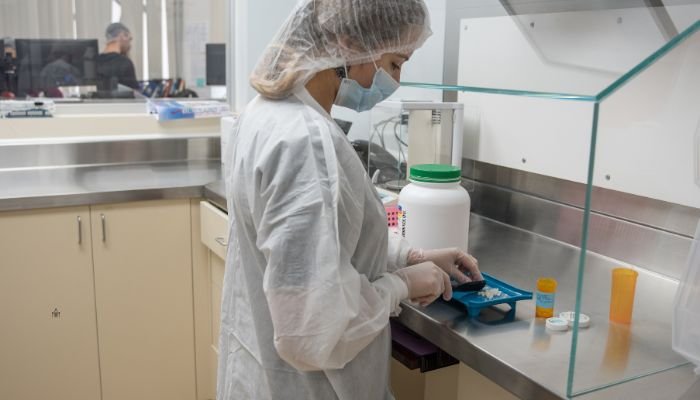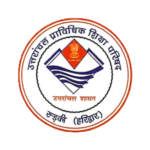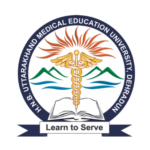Introduction
Pharmacists in the Community: Making a Difference Every day, there are more than just medication dispensers. They are trusted healthcare professionals who play a vital role in the well-being of communities around the world. Often the most accessible healthcare providers, pharmacists in community settings serve as a frontline defense for public health, offering essential services and fostering positive health outcomes.
This article delves into the world of community pharmacists, exploring the various ways they make a difference every day. We’ll examine their diverse responsibilities, the impact they have on patient care, and the reasons why they are considered a cornerstone of local healthcare systems.
The Diverse Roles of Community Pharmacists in the Community: Making a Difference Every Day

Pharmacists in the community are making a difference every day, exceeding the traditional role of dispensing medications. Their expertise encompasses a wide range of responsibilities, including:
- Medication dispensing and counseling: Pharmacists meticulously review prescriptions, ensuring accuracy and potential drug interactions. They also provide comprehensive medication counseling, educating patients on proper usage, side effects, and storage protocols.
- Chronic disease management: Pharmacists play a crucial role in managing chronic conditions like diabetes, asthma, and heart disease. They work collaboratively with physicians to monitor patients’ progress, adjust medications as needed, and offer guidance on lifestyle modifications.
- Vaccinations and immunizations: Community pharmacies are a convenient and accessible location for individuals to receive vital vaccinations. Pharmacists are trained to administer immunizations for various diseases, including influenza, pneumonia, and shingles.
- Public health initiatives: Pharmacists actively participate in public health campaigns, promoting disease prevention and healthy lifestyle choices. They offer screenings for conditions like high blood pressure and cholesterol, providing education and resources to help individuals stay healthy.
- Medication adherence support: A significant challenge in healthcare is medication non-adherence. Pharmacists work with patients to overcome barriers and develop strategies to ensure they take medications as prescribed, ultimately improving health outcomes.
- Over-the-counter medication consultation: Pharmacists offer valuable advice on selecting appropriate over-the-counter medications for minor ailments. They can recommend products, guide proper dosing, and address any concerns patients may have.
- Drug interaction checks: A crucial aspect of patient safety, pharmacists conduct thorough medication reviews to identify and prevent potentially harmful drug interactions.
- First-line healthcare access: For many individuals, particularly in underserved communities, pharmacists are the most readily available healthcare providers. They can offer guidance on minor ailments, recommend over-the-counter solutions, or direct patients to appropriate healthcare services when needed.
The Impact of Community Pharmacists: Making a Difference Every Day

Pharmacists in the Community: Making a Difference Every Day. Here’s how their contributions significantly influence public health:
Improved medication adherence: Pharmacist interventions significantly increase medication adherence rates, leading to better disease control and reduced healthcare costs.
Reduced healthcare burden: By managing chronic conditions, offering preventative care, and providing first-line access to healthcare services, pharmacists alleviate pressure on hospitals and physician offices.
Enhanced patient outcomes: Pharmacists’ expertise in medication management and patient counseling leads to improved health outcomes for individuals with various conditions.
Increased healthcare access: Community pharmacies offer convenient and accessible healthcare services, particularly in areas with limited access to primary care physicians.
Public health awareness: pharmacists play a vital role in promoting public health initiatives and educating communities about disease prevention and healthy living.
Why pharmacists are essential in your community:
Community pharmacists are more than just medication providers; they are trusted healthcare partners invested in the well-being of their communities. Here are some key reasons why their presence is crucial:
Accessibility: Community pharmacies are often conveniently located with extended hours, allowing for easier access to healthcare services compared to traditional doctor’s appointments.
Continuity of care: Pharmacists develop long-term relationships with patients, providing consistent medication management and personalized care.
Expertise in medication therapy: Pharmacists possess in-depth knowledge of medications, their interactions, and their effects on patients.
Focus on preventive care: Community pharmacies emphasize preventative care by offering immunizations, screenings, and guidance on healthy living.
Advocacy for patients: Pharmacists advocate for their patients, ensuring they understand their medications and receive the most appropriate treatment options.
Barriers and challenges faced by pharmacists in the community

While community pharmacists play a vital role in healthcare, they also face various challenges that can hinder their ability to provide optimal care. Here’s a closer look at some of the key barriers they encounter:
Workforce Shortages and Time Constraints:
- Limited Staffing: Many community pharmacies are understaffed, making it difficult for pharmacists to dedicate adequate time to each patient. This can limit their ability to provide in-depth medication counseling and personalized care.
- Increased Workload: Pharmacists often juggle multiple tasks, including dispensing medications, verifying prescriptions, managing inventory, and performing administrative duties. This heavy workload can limit the time they can spend with patients.
Reimbursement and Payment Issues:
- Low Reimbursement Rates: Reimbursement rates for medication dispensing can be low, making it difficult for pharmacies to maintain profitability. This pressure can incentivize faster dispensing times, potentially compromising thorough medication reviews and patient education.
- Focus on Quantity over Quality: Reimbursement systems that prioritize dispensed medications over comprehensive patient care can disincentivize pharmacists from spending time on counseling and preventative services.
Scope of Practice Limitations:
- Restricted Prescribing Authority: In some regions, community pharmacists may have limited or no authority to prescribe medications for certain conditions. This can restrict their ability to manage chronic conditions effectively and meet patients’ needs comprehensively.
- Underutilization of Skills: Regulations or a lack of awareness may prevent pharmacists from utilizing their full range of skills. This underutilization can limit their ability to provide valuable services such as medication synchronization or point-of-care testing.
Technological Challenges:

- Outdated Technology: Some pharmacies may lack access to sophisticated software or electronic health record systems. This can hinder communication with physicians and complicate medication management for patients with complex conditions.
- Integration Issues: Difficulties integrating pharmacy systems with electronic health records used by physicians can create communication gaps and hinder patient care coordination.
Public Perception and Patient Understanding:
- Limited Awareness of Pharmacist Services: Many patients may not be fully aware of the wide range of services offered by pharmacists. This can limit their utilization of these valuable resources.
- Misconceptions about Role: Some patients may perceive pharmacists solely as medication dispensers, overlooking their expertise in medication management and preventative care.
Addressing the challenges
Efforts are underway to address these challenges and empower community pharmacists: Making a difference every day
to reach their full potential. This includes:
Advocacy for Increased Staffing: Advocacy efforts are crucial to attract more pharmacy graduates and improve staffing levels in community settings.
Alternative Reimbursement Models: Exploring alternative reimbursement models that incentivize quality care and preventative services can improve patient outcomes.
Expanded Scope of Practice: Expanding the scope of practice for pharmacists, allowing them to prescribe medications for specific conditions under certain protocols, can improve patient access to care.
Investment in Technology: Investing in modern pharmacy software and promoting seamless integration with electronic health records can enhance patient care coordination and communication.
Public Education Initiatives: Public education campaigns can raise awareness about the diverse services offered by pharmacists and their role in promoting community health.
The Future of Community Pharmacists
Expanded scope of practice: With increased training and regulatory changes, pharmacists may be able to prescribe certain medications for minor ailments, alleviating pressure on primary care physicians.
Telehealth integration: The rise of telehealth creates opportunities for pharmacists to offer virtual consultations, expanding access to medication management services for patients in remote areas or with mobility limitations.
Focus on mental health: As mental health awareness increases, pharmacists can play a role in managing medication for mental health conditions and offering support and resources to patients.
Specialization in specific areas: Community Pharmacists may develop specialized expertise in specific disease areas, providing targeted medication management and patient education.
Collaboration with technology: technological advancements will likely influence the role of pharmacists. This could involve integrating electronic health records for better patient coordination, utilizing medication adherence apps, or employing AI tools for drug interaction checks.
Conclusion
Pharmacists in the Community: Making a Difference Every Day. Community pharmacists are a cornerstone of local healthcare systems, playing a vital role in ensuring the well-being of their communities. Their diverse skillset, ranging from medication expertise to patient counseling, significantly impacts public health. As the healthcare landscape continues to evolve, the role of community pharmacists is expected to expand further, offering increased access to care, enhanced medication management, and a focus on preventative health. By leveraging their expertise and collaborating with other healthcare professionals, community pharmacists will continue to make a significant difference in people’s lives every day.
FAQ
What do community pharmacists do beyond dispensing medications?
They offer comprehensive medication counseling, manage chronic conditions like diabetes and asthma, administer vaccinations, conduct public health screenings, and provide guidance on over-the-counter medications.
Why are community pharmacists important?
They play a crucial role in improving medication adherence, reducing the burden on hospitals, enhancing patient health outcomes, increasing access to healthcare services, and promoting public health awareness.
How can I find a community pharmacy near me?
Utilize online directories like Google Maps or search the websites of pharmacy chains for store locators.
Do I always need an appointment to see a pharmacist?
In most cases, appointments aren’t necessary. However, some pharmacies may recommend scheduling one for specific services, like in-depth medication reviews or immunizations.
Can pharmacists prescribe medications everywhere?
The prescribing authority of pharmacists varies by location. In some regions, they may have limited prescribing rights, while in others, they may not prescribe at all. Check with your local pharmacist or pharmacy association.
What if I have questions about a medication I’m taking?
Pharmacists are medication experts! Don’t hesitate to ask them about proper usage, side effects, or interactions with other medications you’re on.
How can I learn more about the valuable services offered by pharmacists in the community?
Many resources are available online from reputable healthcare organizations or professional pharmacy associations. You can also speak directly to your local pharmacist.
Are community pharmacies just for people with prescriptions?
Absolutely not! They offer a wide range of services to support your health, even if you don’t have a current prescription.
Can pharmacists help me if I’m experiencing a minor ailment?
Yes, they can! Pharmacists can offer guidance on symptoms, recommend appropriate over-the-counter medications, and direct you to a physician if needed.
How can pharmacists help me manage my chronic health condition?
Pharmacists collaborate with your doctor to monitor your condition, adjust medications as needed, and provide support and education to ensure you stay healthy.












